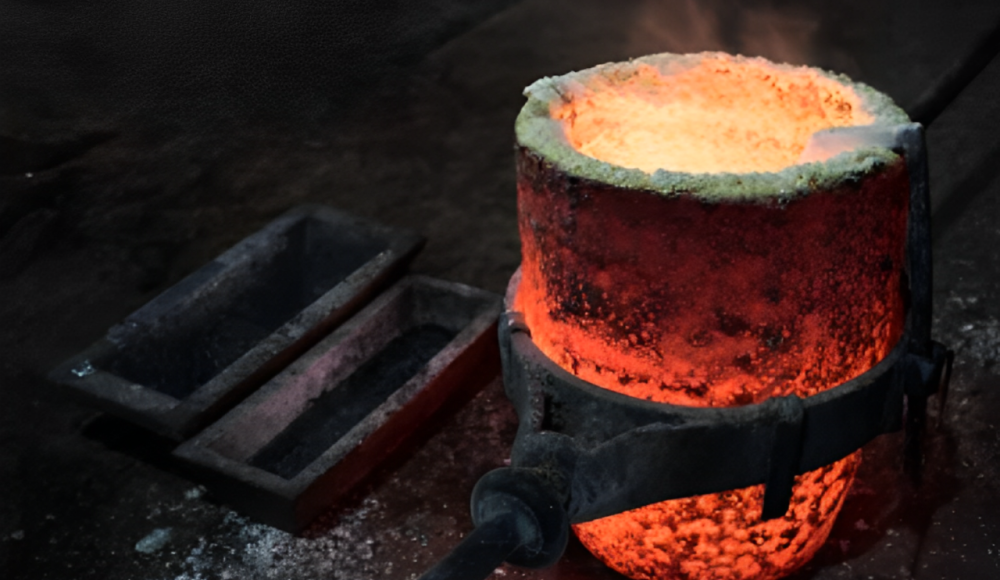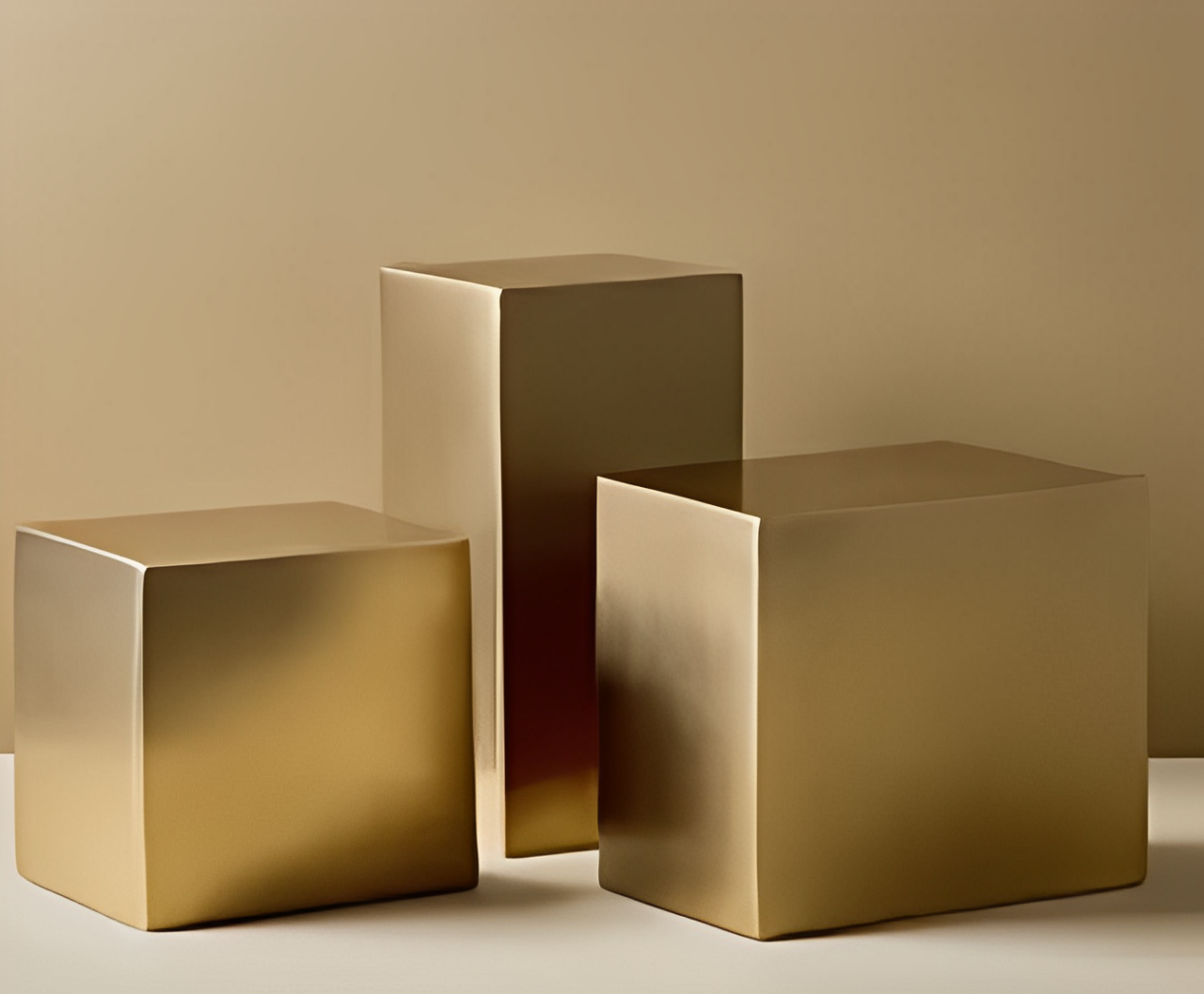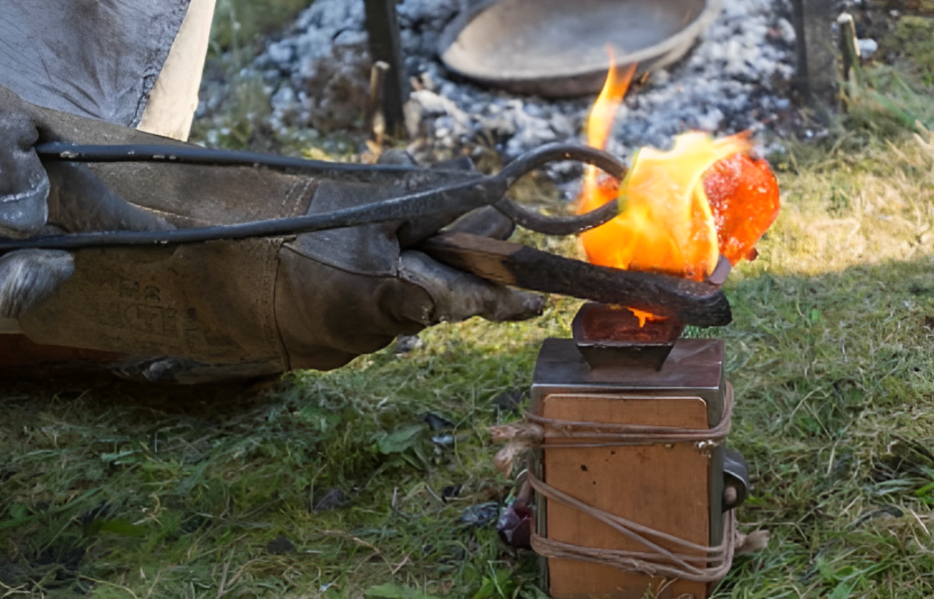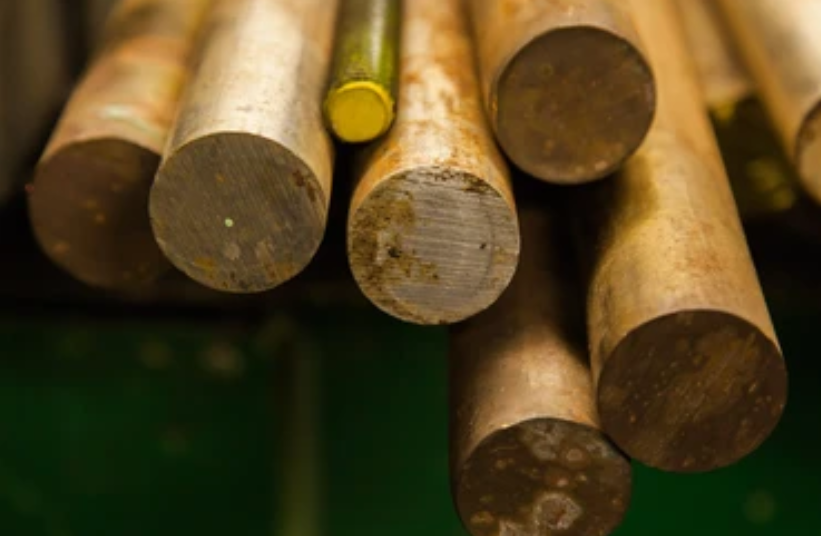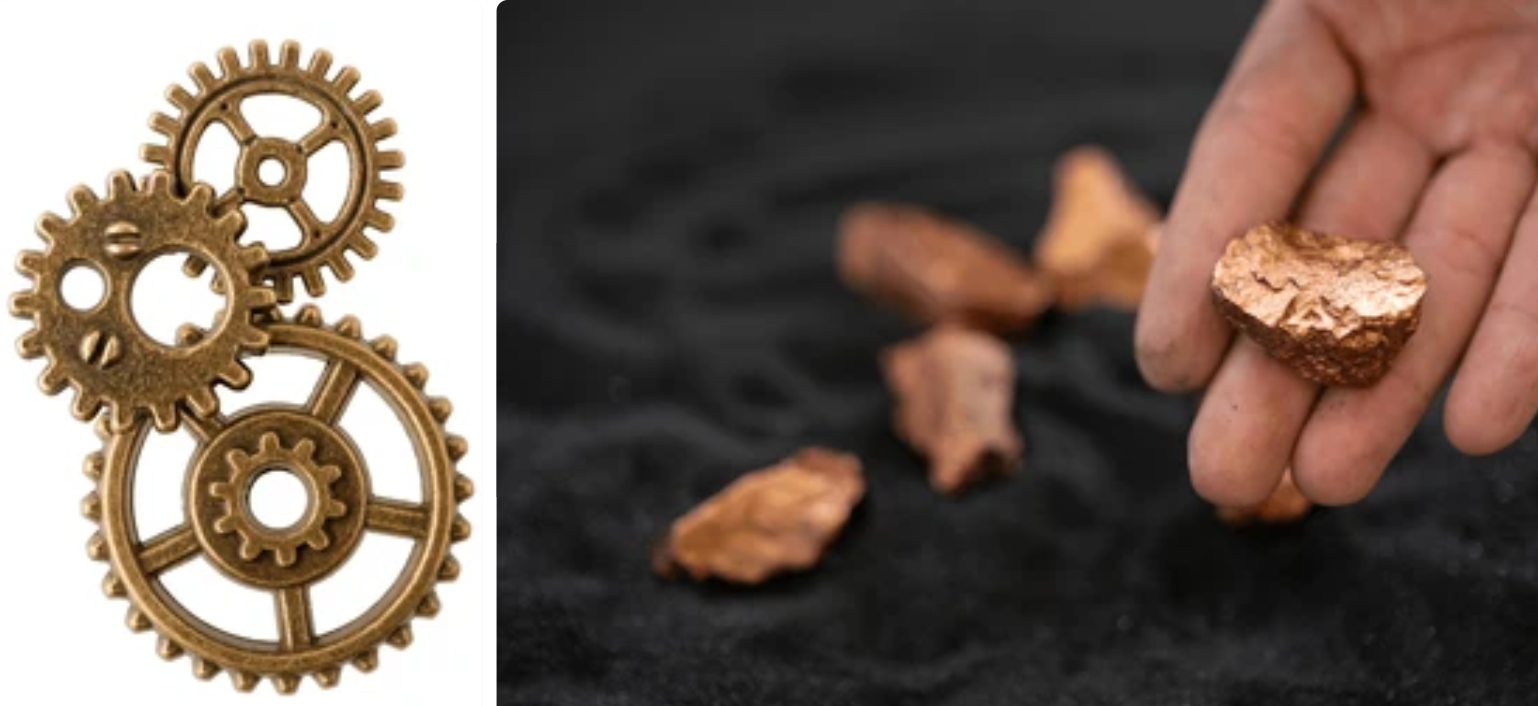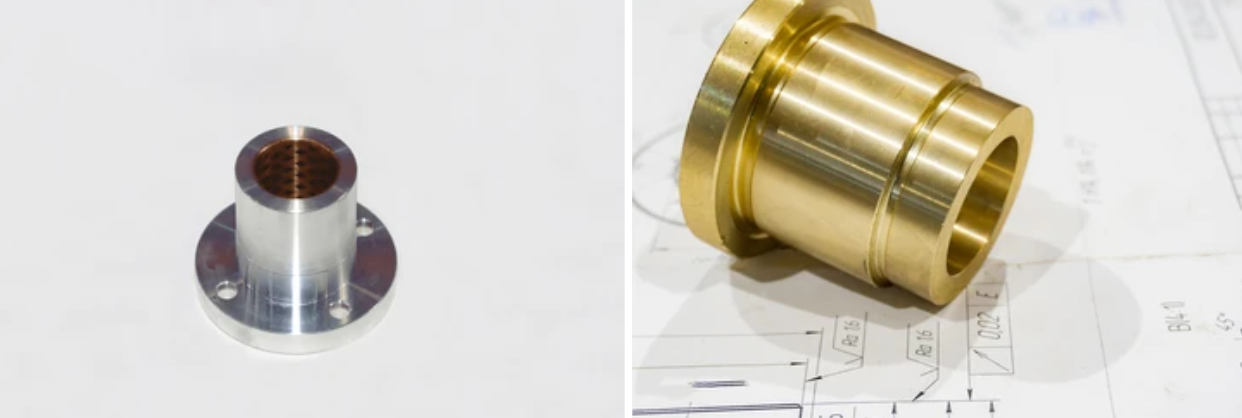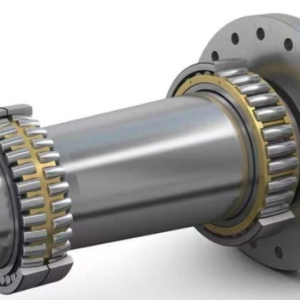The history of man would not be complete without some mention of bronze which is a metal formed mostly of copper mixed with tin and which derives its name from this age – the Age of Bronze. The melting point is an essential characteristic that defines its usage in arts and sculptures, industries, and the manufacture of machinery and structure. Specifically, this article provides the particulars of the melting point of bronze, various factors affecting it, its assessment, and its application.
Composition of Bronze
Bronze is not just one type of metal, it is a general term for a series of alloys. The most common composition includes:
- Copper (Cu): Typically 88-90% of the alloy.
- Tin (Sn): Generally about 10-12% but the variations are possible.
- Zinc (Zn): Often incorporated to offer strength and lower the cost.
- Lead (Pb): Used in collaboration with aluminum in small quantities to improve the wrought nature of alloys.
- Phosphorus (P): Enhances wear protection and raises the hardness of the tool.
Other components, including but not limited to zinc, lead, aluminum, or phosphorus may also be included for the following intended traits. These additions further affect the phase transformation, and shift in the melting point and mechanical properties of the alloy respectively.
Melting Point of Bronze
The bronze does not have a proper melting point because of variations in the composition of the material. However, they are around range of 950°C – 1050°C. It may cause 1742°F – 1922°F. So, the following factors play a significant role in determining the exact melting point:
1. Proportion of Copper to Tin
In most cases, raising the tin content in the alloy tends to decrease the melting point of the material. Tin is added to lower the overall melting point of the metal; pure copper has a very high melting point of 1085°C (1985°F). The tin gives the material higher levels of melting, which makes it easier to work with various methods.
It is therefore important for one to comprehensively understand the relative proportion between copper and tin to get the desired heat and strength characteristics of the bronze alloy.
2. Additional Alloying Elements
There is some more lowering of the melting point as zinc and lead can easily be used. It is slightly raised by aluminum and phosphorus. The process of alloying the base constituent has a direct impact on the thermal characteristics as well, as the casting qualities of the bronze alloy.
That way, it becomes possible to achieve the required functional properties in the context of their use in industry.
3. Purity of Materials
It may be contaminated by impurities that give it different melting characteristics making the temperature of melting lower. Impurities that may be found in the solid cause deviations of burring types, and decrease the melting point.
Purified alloy is the best one in terms of melting behavior and mechanical properties due to fewer variations in the system. Besides this alloy purification is another practice that is routinely carried out to eliminate such undesired phases.
4. Type of Bronze
Other bronze alloys, for instance, aluminum bronze have somewhat different melting points. For instance, it has been noticed that while aluminum bronze is a variety of bronze, then the difference in the melting point between aluminum bronze and bronze is dismally small.
Bronze-type selection solely determines suitability concerning various disciplines, including art and engineering. It appears that alloy development is making the role of bronze even more diverse today.
5. Environmental Conditions
This is due to small interfering variables such as pressure that may cause small changes in the melting temperatures as seen in experimentations. Other environment-related factors such as the pressure of the air outside the experimentation can also slightly affect the rates of melting in experimentation arrangements.
We can take measures during processing to allow ‘environmental control’ to produce consistent and accurate results of casting. Modern methods of remelting take into consideration various factors incessantly, to furnish the best outcome.
Measuring the Melting Point
The melting point of bronze is determined through laboratory methods such as:
- Differential Scanning Calorimetry (DSC): Ultrasonic velocimetry (UV) monitors heat as it transforms from solid to liquid in the alloy.
- Thermal Analysis Techniques: Involves heating a sample and measuring the temperature from which the sample starts melting.
- Pyrometric Measurements: High-temperature thermocouples enable the recording of a precise temperature during the heating process.
- Optical Pyrometry: Contactless devices used in infrared thermal imaging provide highly accurate measurements of temperature rates.
- Electrical Resistivity Testing: Records alterations of electrical resistance as the alloy goes through its phase transition to become molten.
Comparison of Melting Point of Bronze with Other Alloys
Here is a small comparison of the melting point of bronze with other alloys:
| Alloy | Melting Point (°C) | Properties |
| Bronze | 950-1050 | Durable, corrosion-resistant, and suitable for sculptures and tools |
| Brass | 900-940 | Malleable, lower melting point, used in decorative applications |
| Pure Copper | 1085 | Excellent electrical conductivity, softer and less durable |
| Steel | 1370-1510 | Strong, high melting point, requires corrosion protection |
| Aluminum | 463-671 | Lightweight, lower melting point, less durable in high-stress environments |
Historical Significance of Melting Point of Bronze
The issues with the melting point of bronze impacted human history more than many other things. In the early period known as the Bronze Age (Approximately between 3300- 1200 BCE), these societies used bronze for making tools, weapons, and ornaments because it had a lower melting point than stone and copper. So, these changes were a progression of earlier civilizations and in some ways a reflection of an early industrial revolution as it related to metallurgy.
- Allowed creating big numbers of tools and weapons through the help of equipments.
- Permitted commerce and economic activities mainly metallurgical in focus.
- They also encouraged the development of several specialized artisan-related guilds.
- Supplied a material that was both robust and beautiful.
- Technologically, it was a giant leap from the Stone Age.
Applications Affected by the Melting Point of Bronze
It was important to understand the melting of bronze for its subsequent usage and this information was essential.
1. Casting
Bronze also has one of the lowest and most easily manageable melting point ranges which make it suitable to be cast. Bronze has been on the list of many artists and manufacturers for quite some time now used in the making of sculptures, tools, and other fancy items.
- Lost-Wax Casting: This is an old process whereby a model of wax is made and then coated in sand, before molten bronze is poured on top which results in a replicate of the wax model.
2. Machinery and Tools
Bronze has other outstanding attributes such as hardness and corrosion resistance making it popular in bearings bushings and other machine parts. For instance, it is crucial to know the melting point to a degree. So, we can guarantee the material’s characteristics during the repair process.
3. Sculptures and Art
The melting point defines conditions for working with bronze allowing artists to design intricate and Sherman’s sculptures that will stand the test of time.
4. Marine Applications
Marine alloys of bronze used in ships contain either aluminum or silicon material to combat the effects of seawater corrosion. This affects their fabrication and repair activities in the ship construction industry and in marine structures.
5. Musical Instruments
Bronze is particularly utilized in bells and cymbals where the essential property of sound is essential. Another thing is, the properties of the alloy make it possible to control its composition and melting point which in turn affects sound quality.
Advancements in Bronze Technology
The metallurgists of the current world have stretched the utilization of bronze by influencing and controlling its melting point and other characteristics by varying the kind and degree of alloying as well as the processing and formation treatments.
● High-Tech Applications
Bronze is now used in industries like aerospace and most electronics because of its requirement to melt and cast accurately. For instance, phosphor bronze is applied in operational electrical connectors and springs due to its superior conductivity as well as wear-resistant characteristics.
● Environmental Considerations
We can more often recycle these days because its components can be reprocessed and reused over and over without major adulteration.
Challenges in Interacting with the Bronze Age
Despite its advantages, working with bronze presents some challenges:
- Oxidation: The problem associated with bronze components during the melting process is that they particularly the copper part get oxidized which is not desirable.
- Alloy Homogeneity: Uniformity is obtained by paying much attention to temperature and stirring during the process of melting the materials together.
- Energy Consumption: While requiring less energy than steel to melt, the energy cost cannot be disregarded in large-scale production means.
Future of Bronze
With the development of materials science, the uses of bronze are also continually prodigal in different aspects. Scientists revealed possible developments in the enhanced BrC with better characteristics, for instance with increased specific strength and corrosion resistance.
Conclusion
The melting point of bronze is one of the features that determine its history, usage, and inventions in technology. It is for this reason that one has to be conversant with what makes it melt and how this process can be regulated for industries as well as artisans. Like any other metal, bronze still seeks new roles in the modern world of technology, while its melting point is one of the constants that are always vital.
Frequently Asked Questions (FAQs)
- What is the average melting point of the metal known as bronze?
Bronze has a relatively high melting point that varies between 950 and 1050 degrees Celsius, all because of the alloying elements.
- How does the tin content in bronze influence its melting point?
When increasing the tin content of bronze, the melting point of the material decreases. This makes it easy for the casting industry to use in their projects.
- Can we reuse the bronze after its melting point?
Yes, we can recycle bronze. Recycling does bring in impurities and we control to keep the metal with the melting and mechanical properties of the alloy.
- Is there any special type of bronze with a relatively high melting point?
Yes, some of the alloys like aluminum bronze offer better melting points and are suitable in applications with high heat demand.

